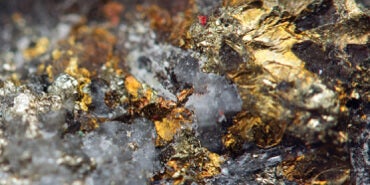Months after the initial launch, many questions remain around the submission process for the Substances of Concern In articles, as such or in complex objects (Products) (SCIP) database. For example, companies are still testing best practices to acquire and clean the complex data needed to create their notifications. They are also faced with deciding on the overall resource dedication required to have a successful SCIP program in place.
The SCIP submission requirements, as mandated by the EU Waste Framework Directive, change often. However, the overall process remains the same, notably regarding the time commitment needed to make a single SCIP submission. To learn more about the database and what you can do to prepare for it, click here.
SCIP Notifications
Firstly, SCIP notifications are required for companies that operate in the EU and produce, import or manufacture products containing articles with Substances of Very High Concern (SVHCs) above a 0.1 percent weight by weight (w/w) threshold. A SCIP notification has data requirements that extend well beyond what would normally be needed to meet Registration, Evaluation, Authorisation and Restriction of Chemicals (REACH) Regulation requirements. More information on the SCIP data requirements can be found here.
Notifications are required for each simple article (i.e. part with a specific design or function) and each complex article (i.e. a part containing two or more articles). Complex notifications must reference the notifications of the simple articles involved in their composition. These simple notifications should be made before the complex one. Complex notifications may include numerous simple articles, and would thus require a substantial amount of time.
The SCIP deadline has passed. To learn how you can achieve compliance, read our whitepaper, Managing Data Submissions to the ECHA SCIP Database.
How to Make a SCIP Notification
The SCIP database is maintained by the European Chemicals Agency (ECHA). The agency has approved three ways for a company to prepare a notification:
- Online using the ECHA IUCLID cloud services and Submission Portal.
- Offline using the IUCLID software installed on internal personal computers (PCs) and servers.
- Through system-to-system transfers where data is managed in IUCLID-acceptable formats.
We will demonstrate a hypothetical submission using an imaginary product: a PC made by Acme Co.
Personal computers are made up of thousands of individual parts, many of which may contain SVHCs. It’s common for resistors to contain lead, connectors to contain brass (which contains lead) and for bis(2-ethylhexyl) phthalate (DEHP) to be used in certain diodes. All of these parts may be found in a computer’s motherboard, which is a single complex component of a computer.
To begin, Acme must make a notification for the simple articles containing SVHCs above threshold. This takes approximately 30 minutes per part.
Grouping articles is allowed for parts of the same type and chemistry. For example, brass screws of the same make and model used in different complex articles may be grouped. Similar parts with different chemistry (such as concentrations) or parts with differing models will need to be created separately. The time required for submissions varies greatly depending on the ability to group parts, as there may be as many as 30 diodes in a single computer part.
Assuming each of the previously listed SVHC-containing articles may be grouped and are the only in-scope articles, the simple notification process would take about 90 minutes to complete.
These simple notifications must then be rolled up into more complex notifications for the articles they make up. It takes approximately 10 minutes to organize each complex notification. Referencing existing submissions will require an organized data management system to ensure accuracy and efficiency.
With the data assembled, it will take an additional 20 minutes to validate and format the SCIP dossier in accordance with ECHA guidelines. A further 10 minutes will be needed to complete the upload to the database.
| Task | Time (in minutes) |
|---|---|
| Simple Notifications (30 Min. Each) | 90 |
| Complex Notification Organization (10 Min. Each) | 30 |
| Format Dossier | 20 |
| Upload | 10 |
| Total | 150 |
In this scenario, completing the SCIP notification for the complex object containing three in-scope articles would take a full-time employee 2.5 hours to complete. Of course, a computer has more than one complex object, and computer manufacturers create more than one model. The result is a potentially vast time commitment to meet EU Waste Framework Directive data requirements.
Also of note, when certain values change (e.g. new SVHCs are added to the REACH Candidate List), companies are required to update their dossier.
How Assent Can Help
Assent Compliance provides companies with an efficient solution to the complex demands created by the EU Waste Framework Directive. The Assent Compliance Platform can seamlessly scan a supply chain for SVHC-containing articles and engage suppliers for the comprehensive data sets needed for the SCIP database. Assent integrates with the ECHA’s submission portal for a complete solution from data collection to final submission. To learn more, contact us today.









